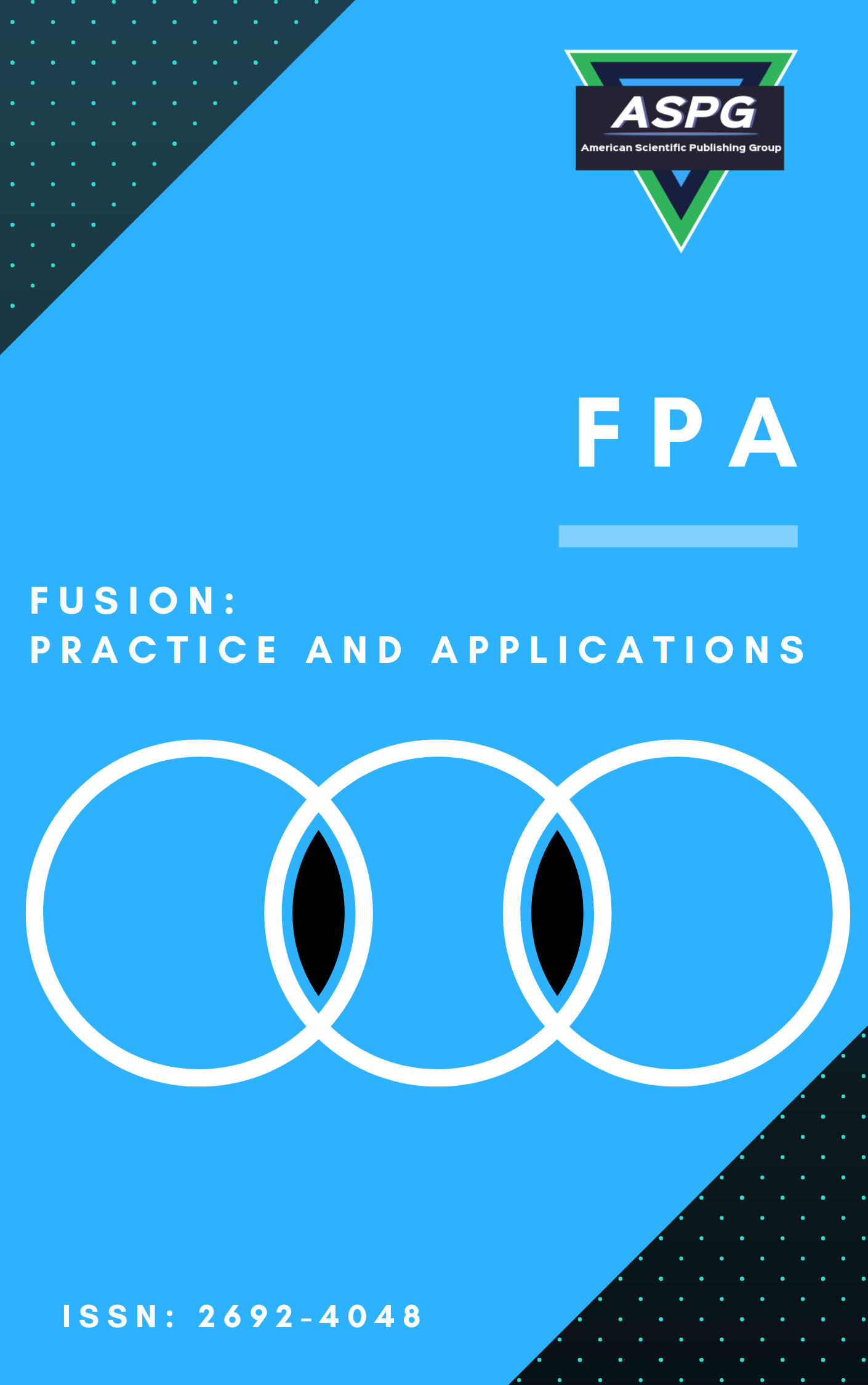

Volume 21 , Issue 1 , PP: 01-12, 2026 | Cite this article as | XML | Html | PDF | Full Length Article
Wafaa H. Alwan 1 * , Sabah M. Imran 2
Doi: https://doi.org/10.54216/FPA.210101
Finding and treating different types of strabismus, which is when the eyes do not line up properly, can be challenging. This study introduces a deep learning system that automatically identifies five types of strabismus: esotropia, exotropia, hypertropia, hypotropia, and normal eye alignment. It combines EfficientNet-B0 with Grad-CAM to improve how the system recognizes and classifies these conditions accurately. These help EfficientNet-B0 improve how it picks out important features using squeeze-and-excitation blocks, which capture key details needed for accurate classification. Grad-CAM further refines this process and localizes the critical regions in the feature maps more effectively to improve interpretability. We trained the model on a dataset of 10,000 balanced images across the five classes, achieving a classification accuracy of 99.43% and 96.33% for training and testing data, respectively. The model's focus-based architecture ensures that clinicians' set goals are met in terms of the model's efficiency and reliability for predictions.
Strabismus classification , Deep learning , EfficientNet-B0 , Squeeze-and-Excitation , Medical diagnostics , Image classification
[1] J. Shah and S. Patel, “Strabismus: Symptoms, pathophysiology, management, and precautions,” International Journal of Science and Research, vol. 4, no. 7, pp. 1510–1514, 2015.
[2] V. E. Das, “Strabismus and the oculomotor system: insights from macaque models,” Annual Review of Vision Science, vol. 2, no. 1, pp. 37–59, 2016.
[3] H. B. McBain et al., “The impact of strabismus on quality of life in adults with and without diplopia: a systematic review,” Survey of Ophthalmology, vol. 59, no. 2, pp. 185–191, 2014.
[4] T. L. Huang and S. L. Pineles, “Strabismus and pediatric psychiatric illness: A literature review,” Children, vol. 10, no. 4, p. 607, 2023.
[5] M. G. Sawyer et al., “Health-related quality of life of children and adolescents with mental disorders,” Journal of the American Academy of Child & Adolescent Psychiatry, vol. 41, no. 5, pp. 530–537, 2002.
[6] G. E. Arblaster et al., “Patient perspectives on their outcomes from strabismus surgery undertaken for psychosocial reasons,” Eye, vol. 38, no. 15, pp. 2926–2931, 2024.
[7] M. D. Pinazo-Durán et al., “Eclectic ocular comorbidities and systemic diseases with eye involvement: a review,” BioMed Research International, vol. 2016, no. 1, Article ID 6215745, 2016.
[8] H. B. Burch et al., “Management of thyroid eye disease: a consensus statement by the American Thyroid Association and the European Thyroid Association,” European Thyroid Journal, vol. 11, no. 6, 2022.
[9] E. O. Schotthoefer and D. K. Wallace, “Strabismus associated with thyroid eye disease,” Current Opinion in Ophthalmology, vol. 18, no. 5, pp. 361–365, 2007.
[10] M. Nowak et al., “Differential diagnosis of thyroid orbitopathy—diseases mimicking the presentation or activity of thyroid orbitopathy,” Endokrynologia Polska, vol. 75, no. 1, pp. 1–11, 2024.
[11] S. Hull et al., “Tests for detecting strabismus in children aged 1 to 6 years in the community,” Cochrane Database of Systematic Reviews, no. 11, 2017.
[12] E. Grudzińska et al., “Usefulness assessment of automated strabismus angle measurements using innovative Strabiscan device,” Journal of Clinical Medicine, vol. 13, no. 4, p. 1067, 2024.
[13] C. Ancona et al., “Stereo tests as a screening tool for strabismus: which is the best choice?,” Clinical Ophthalmology, pp. 2221–2227, 2014.
[14] C. Mestre et al., “An automated and objective cover test to measure heterophoria,” PLoS ONE, vol. 13, no. 11, Article ID e0206674, 2018.
[15] M. Cantó-Cerdán et al., “Comparative analysis of strabismus measurement using a video oculagraphy system and alternate prism cover test,” Asia-Pacific Journal of Ophthalmology, vol. 12, no. 6, pp. 582–590, 2023.
[16] B. T. Barrett, “Assessment of binocular vision and accommodation,” in Clinical Procedures in Primary Eye Care, WB Saunders, pp. 147–208, 2014.
[17] L. Abdu, “Clinical evaluation of horizontal pediatric strabismus and the management challenges,” in Frontiers in Ophthalmology and Ocular Imaging, IntechOpen, 2019.
[18] C. Yi et al., “Advances in artificial intelligence in thyroid-associated ophthalmopathy,” Frontiers in Endocrinology, vol. 15, Article ID 1356055, 2024.
[19] G. W. Armstrong and A. C. Lorch, “AI (eye): a review of current applications of artificial intelligence and machine learning in ophthalmology,” International Ophthalmology Clinics, vol. 60, no. 1, pp. 57–71, 2020.
[20] J. P. O. Li et al., “Digital technology, tele-medicine and artificial intelligence in ophthalmology: A global perspective,” Progress in Retinal and Eye Research, vol. 82, Article ID 100900, 2021.
[21] J. D. S. de Almeida et al., “Computational methodology for automatic detection of strabismus in digital images through Hirschberg test,” Computers in Biology and Medicine, vol. 42, no. 1, pp. 135–146, 2012.
[22] T. de Oliveira Simoes et al., “Automatic ocular alignment evaluation for strabismus detection using U-Net and ResNet networks,” in 2019 8th Brazilian Conference on Intelligent Systems (BRACIS), pp. 239–244, IEEE, October 2019.
[23] S. M. Jung et al., “Strabismus classification using face features,” in 2019 International Symposium on Multimedia and Communication Technology (ISMAC), pp. 1–4, IEEE, August 2019.
[24] Ş. Karaaslan et al., “A new method based on deep learning and image processing for detection of strabismus with the Hirschberg test,” Photodiagnosis and Photodynamic Therapy, vol. 44, Article ID 103805, 2023.
[25] A. Jabbar et al., “A retinal detachment based strabismus detection through FEDCNN,” Scientific Reports, vol. 14, no. 1, Article ID 23255, 2024.
[26] A. Ananthamoorthy, “Strabismus dataset [Data set],” Kaggle, 2024. [Online]. Available: https://www.kaggle.com/datasets/ananthamoorthya/strabismus. [Accessed: Dec. 23, 2024].
[27] M. Tan and Q. Le, “EfficientNet: Rethinking model scaling for convolutional neural networks,” in International Conference on Machine Learning, pp. 6105–6114, PMLR, May 2019.
[28] S. Nigam et al., “EfficientNet architecture and attention mechanism-based wheat disease identification model,” Procedia Computer Science, vol. 235, pp. 383–393, 2024.
[29] R. R. Selvaraju et al., “Grad-CAM: Visual explanations from deep networks via gradient-based localization,” in Proceedings of the IEEE International Conference on Computer Vision, pp. 618–626, 2017.